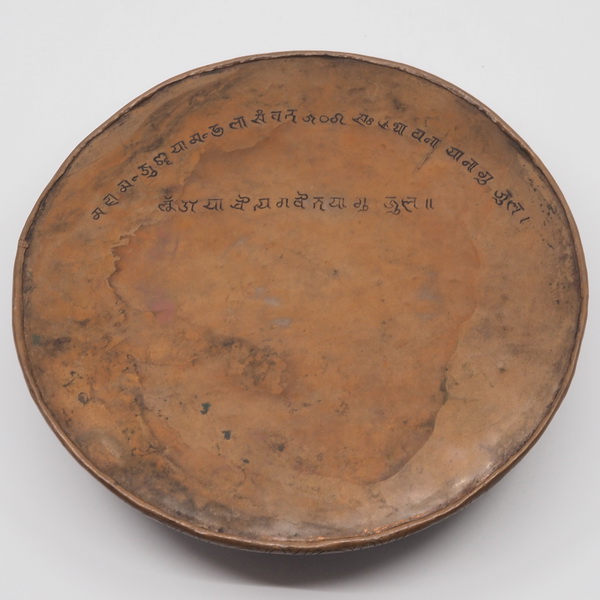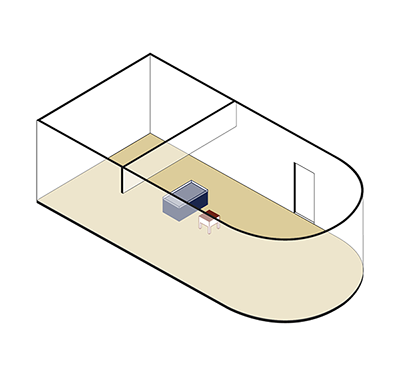ABS 322
Code: ABS 322
Country: Nepal
Style:
Date: 1386
Dimensions in cm WxHxD: 18
Materials: Copper
Manjushri Paduka Mandala
This ritual object represents the feet of Manjushri placed on a Mandala in the shape of a circular lotus. Similar representations, made of stone or metal, can be found in several Buddhist monasteries of the Kathmandu Valley. Perhaps the most famous Manjushri Paduka-Mandala of Nepal is located near Agnipura at the Svayambhu Mahacaitya complex.
This iconography refers to the practice of worshipping the footprints of holy individuals. In the early centuries of Buddhism, the Buddha was not represented as a person. Under the rule of Ashoka (from 272 to 231 before our time) a symbolic form of representation of Buddhist concepts began, initially with the erection of pillars in the Indo-Persian style, and with the representation of the teachings in the form of an eight-spoke wheel. At the end of the 3rd century B.C.E., representations of the footprints of Buddha appeared. The first portraits of the historical Buddha as a person appeared in the 1st century B.C.E., first in the form of reliefs as illustrations on stupas, and later in the form of statues. The concept of boddhisattvas and their representations like Manjushri,emerged only later with Mahayana Buddhism.
This ritual object represents the feet of Manjushri placed on a Mandala in the shape of a circular lotus. Similar representations, made of stone or metal, can be found in several Buddhist monasteries of the Kathmandu Valley. Perhaps the most famous Manjushri Paduka-Mandala of Nepal is located near Agnipura at the Svayambhu Mahacaitya complex.
This iconography refers to the practice of worshipping the footprints of holy individuals. In the early centuries of Buddhism, the Buddha was not represented as a person. Under the rule of Ashoka (from 272 to 231 before our time) a symbolic form of representation of Buddhist concepts began, initially with the erection of pillars in the Indo-Persian style, and with the representation of the teachings in the form of an eight-spoke wheel. At the end of the 3rd century B.C.E., representations of the footprints of Buddha appeared. The first portraits of the historical Buddha as a person appeared in the 1st century B.C.E., first in the form of reliefs as illustrations on stupas, and later in the form of statues. The concept of boddhisattvas and their representations like Manjushri,emerged only later with Mahayana Buddhism.



